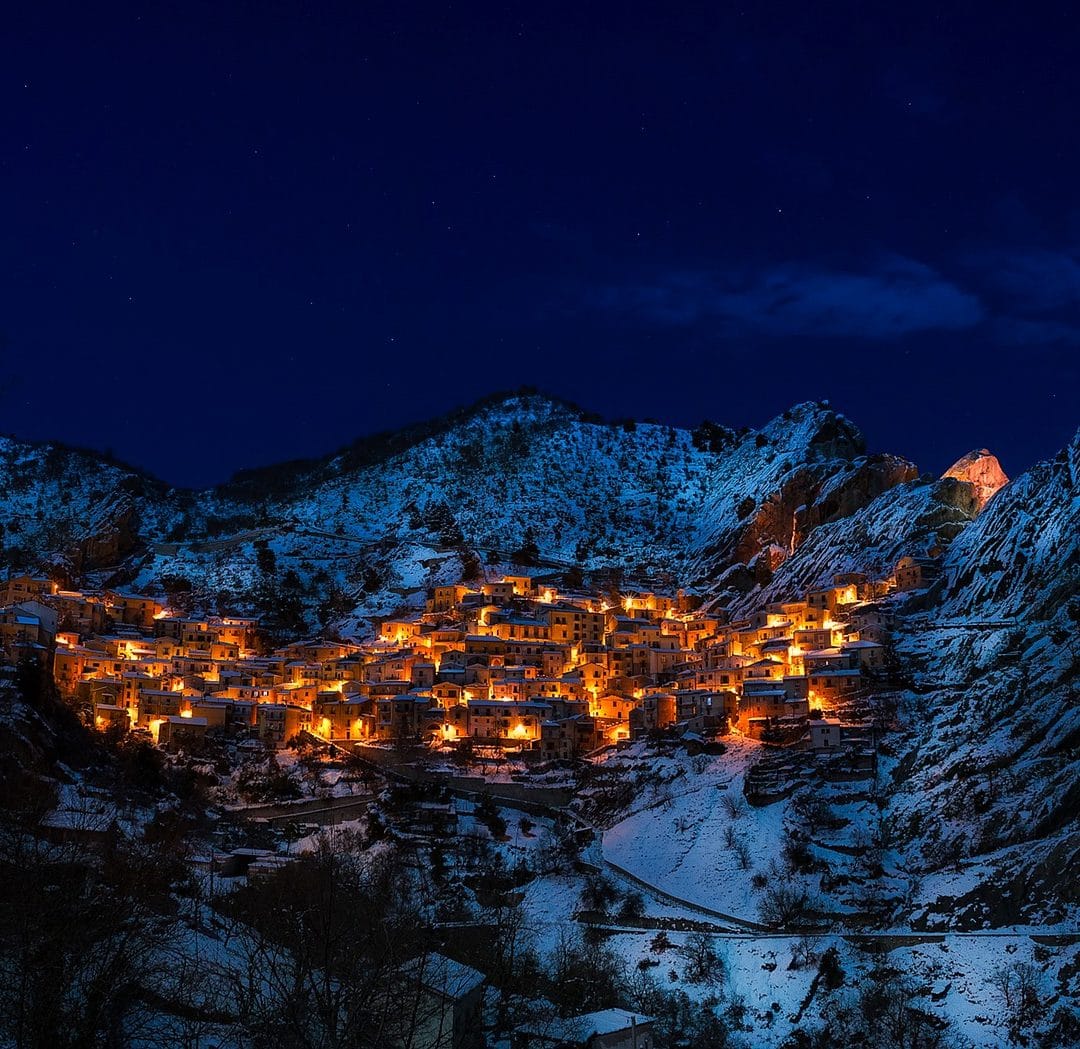
by Somya Devi | Jan 15, 2018 | Uncategorized
The new lunar cycle begins with a new Moon in Capricorn on the dark night of January 16th. The Sun and Moon join at 6:17 pm PT, at 2° sidereal Capricorn, closely joining Venus at 4°, and in the same sign as Ketu, the south node, signaling the approach of an oncoming eclipse. This is yet another cycle beginning under an inauspicious kala sarpa alignment, though thankfully the last for a while (until August of this year).
Capricorn Cycle
Saturn continues to be a powerful force throughout the beginning of this new year. The previous lunar cycle began with Sun and Moon joining Saturn, and the full Moon on January 1st was opposite the austere planet, pressuring us to be aware of the consequences of our actions. This cycle begins in a Saturn-ruled sign, Capricorn, as will the next, which will start with an eclipse in Aquarius.
Capricorn is perhaps the most practical and responsible sign. With the combination of earth sign-energy, Saturn’s long-term gaze, and a tamasic (heavy) quality, Capricorn’s energy compels us to create stable structures and routines that support our long-term goals and responsibilities. This month we may take inventory of how we are doing along these lines, and implement some practical and physical routines that take effort and perseverance, and help us to align with our broader vision. A new diet or exercise regime and a re-examination of financial planning are well-supported by Saturn’s influence right now.
Ketu & Upcoming Eclipses
The close conjunction with Ketu, however, can cast a shadow of confusion over these plans, as we approach a total lunar eclipse on January 31st. The eclipse (at 13:31 UT) will occur on the full Moon, and will be visible from Asia, Australia, India, the Pacific, and western North America. Deep introspection and self-observation is necessary to see through the muck that arises with the conjunction of the nodes on the lunar cycle.
This is the first of 3 major eclipse cycles to occur with the nodes transiting the Cancer-Capricorn axis. With Rahu’s eager, obsessive, and childish head running amok in Cancer, and Ketu’s resistant, critical pall obscuring Capricorn, these eclipses may cause us to allow overwhelming emotions to get the best of us, while disregarding the practical voice of reason. The nodal transit reveals our personal shadows, the inner struggles we face in creating an equilibrium between emotional, heart-centered living and the meeting of life’s goals on the earth-plane. This transit, and these eclipses, also bring up specific shadow work for each individual depending on the natal chart (download the free 2018-2019 Rahu-Ketu Forecast for your Sign here.)
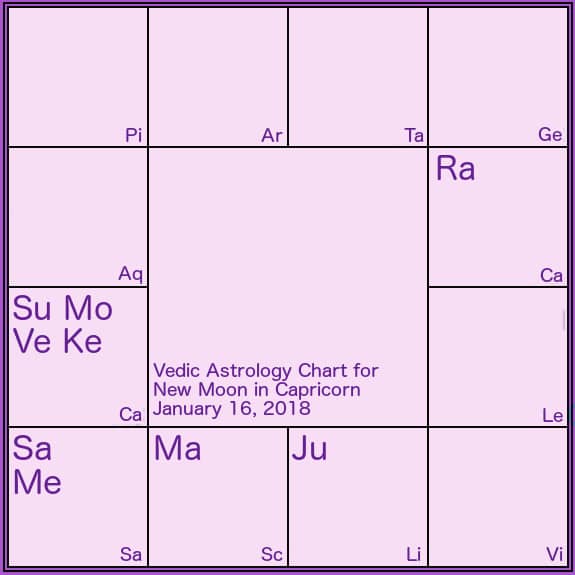
Uttara Ashada
The Sun and Moon, along with Venus, are joined in the Vedic nakshatra called Uttara Ashada, “the latter invincible one,” as we begin this lunar cycle. This star is ruled by the Vishvadevas, the lords of dharma, which will compel us towards doing our duty as we get our ducks in a row this month. The closeness of Ketu and the eclipse cycle, however, could bring up some confusion as to what this duty is. As always, the new Moon in particular is an optimal time for meditation and introspection, especially important for the next month as we forge through the eclipse energy.
Venus
With Venus combust at the beginning of this cycle (within 2° of the Sun), we might struggle within relationships. Under this placement, it is more difficult to feel that our desires are being met, and that we are feeling appreciated and valued by our loved ones. Venus’ proximity to Ketu may also bring up a lot of criticism around partnerships, and can challenge happiness in general.
Mars in Scorpio
With Mars moving into his own sign of Scorpio on the 16th, look for Mars’ influence to be stronger in your life this month. If he is a helpful planet in your chart, then your energy, courage, and discipline may grow more acute. If he is a challenging influence for you personally, however, be wary of getting into arguments and losing your cool.
Kala Sarpa
Though we begin this lunar cycle under a kala sarpa yoga, with all planets on one side of the nodal axis (or joining it), we are nearing the end of these difficult alignments for a while. The Moon’s movement will break the cycle on January 18th, until January 30th, when we enter one last kala sarpa cycle through February 5th. At that time, Venus will leave Capricorn and enter Aquarius, making these cycles impossible until August. From February through August, there will be slightly more balance in the planetary energies. The kala sarpa cycle is a type of imbalance, wherein the clustering of the planets on one side of the sky tends to bring heavier and more turbulent experiences in general.
Personal life course and 2018 readings are available by phone or Skype.
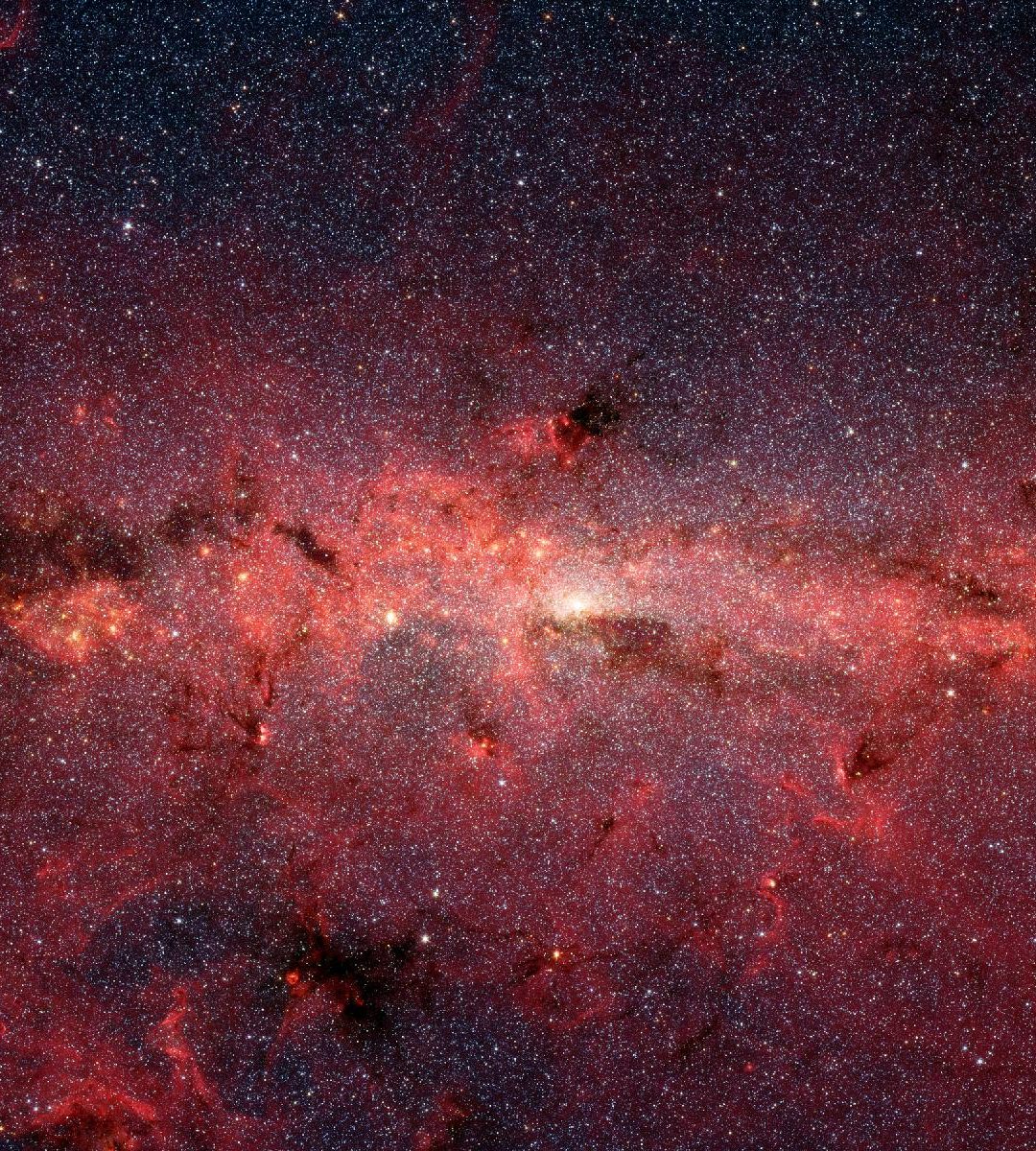
by Somya Devi | Dec 15, 2017 | Astrology, Conjunctions, Eclipses, Events
New Moon in Sagittarius in Mula Nakshatra
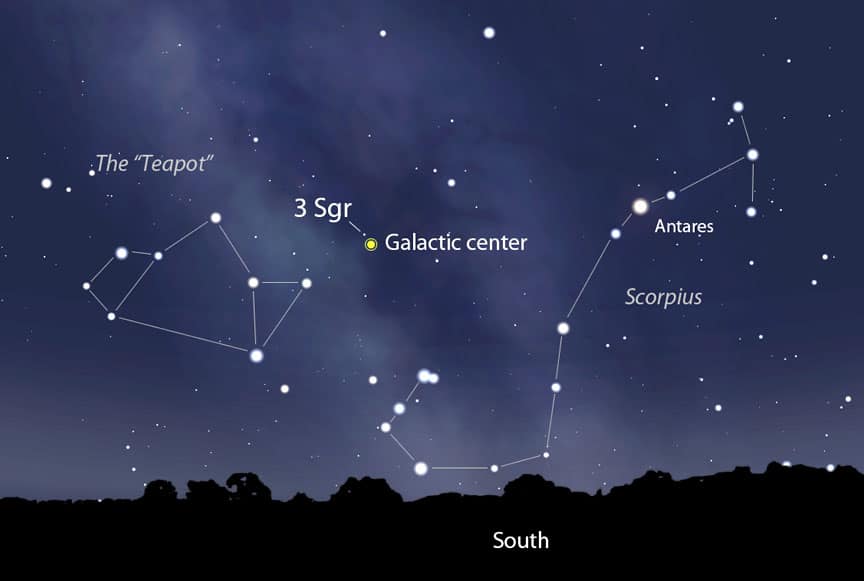 This Sunday, December 17th, we begin a new lunar cycle at 10:31 pm PST with the Sun, Moon, and Saturn aligning in early sidereal Sagittarius. This Sagittarius cycle will lead us into the new year, with the Moon reaching fullness on January 1st. The Sun and the Moon will come together at 2° of sidereal Sagittarius, aligned closely with Saturn at 5° and oriented towards the galactic center, and Mula nakshatra.
This Sunday, December 17th, we begin a new lunar cycle at 10:31 pm PST with the Sun, Moon, and Saturn aligning in early sidereal Sagittarius. This Sagittarius cycle will lead us into the new year, with the Moon reaching fullness on January 1st. The Sun and the Moon will come together at 2° of sidereal Sagittarius, aligned closely with Saturn at 5° and oriented towards the galactic center, and Mula nakshatra.
Sagittarius Cycle
Sagittarius carries the energy of its ruling planet, Jupiter into action. It is a fire sign, and a masculine, or yang, sign, both qualities that help us to transform our inspiration, ideas, and beliefs into real actions in the world. Whatever principles, philosophies, or beliefs you hold, this month is a time to propel them forward and spread your inspiration to others. Jupiter is also joining with Mars at this time, adding a potency of power to our ability to move with righteous purpose.
Of course, a caveat to this is to watch against acting with blind faith, but to really dive into yourself and let your authentic personal faith shine through. Sun’s and Moon’s position in Mula nakshatra, and close to Saturn, will help with this.
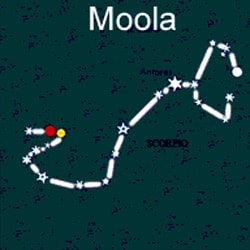 Mula Nakshatra
Mula Nakshatra
Mula (or Moola) nakshatra is the Vedic constellation which translates as “the root.” As the literal center of the galaxy (when we look past Mula, we are looking into the galactic center), planetary energy here compels us to find the deepest truth within ourselves, our beliefs, and everything. Planets here encourage us to be investigators, researching and probing until the deepest layers of truth are revealed. Though technically in the early degrees of Sagittarius, Mula aligns with the tail of the Scorpion, and brings up imagery of both poison and medicine, and the idea that poison can be medicine as it shocks us into transformation. The deity for this star is Nirritti, a dark form of Goddess Kali who relates to destruction and death.
Solstice
As the Sun goes down on the night of the solstice (December 21st), we experience a little death, as the solar year ends and we await the new one to arise. This completes the cycle of the Sun from its northernmost course to its southernmost, and will be the shortest day of the year in the northern hemisphere, and the longest in the southern. This is a powerful night for going inward, being still, and practicing rituals for letting go of the past and what no longer serves.
Saturn
Saturn’s conjunction with Sun and Moon adds a level of seriousness and fortitude to this powerful transitional cycle. Saturn, or Lord Shani, is the slowest-moving planet, and stimulates us to find more maturity and wisdom. He adds a weight of seriousness that reminds us that actions have consequences, and helps us to call forth our inner old wise person. We want this inner sage to weigh in as we probe our depths to see which our beliefs are worth supporting through effort and actions as we enter the new year.
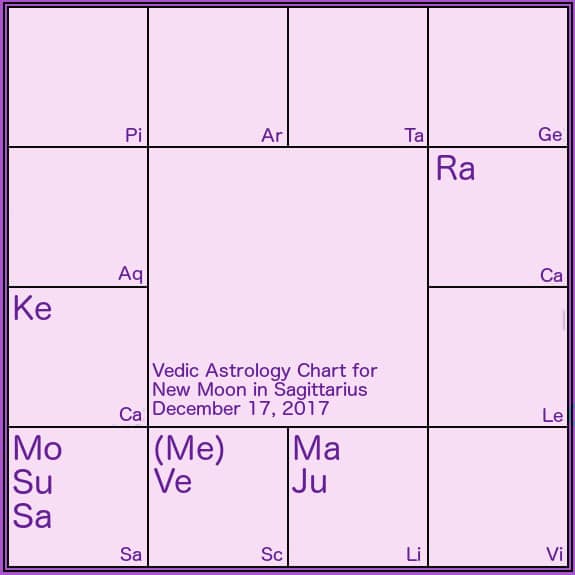
Kala Saarpa
We enter our final lunar cycle of the year under a Kala Saarpa yoga, with all planets on one side of the nodal Rahu-Ketu axis in the sky. This increases the level of intensity in everything in our lives, especially around deep inner work that we are doing. Though we may not be comfortable with letting go of our accustomed mindset, the alignment of the planets now is primed for some big changes to take place, especially around philosophy, beliefs and ideas.
The final Kala Saarpa for this season will run from January 2nd through January 19th, after which time the Sun will have passed Ketu, and we’ll have another 6 months free from this bi-monthly cycle. These cycles will continue for roughly half the month during roughly half the year, until December 2019.
Planetary Wars & Upcoming Eclipses
With so many planets so close together, we continue to have planetary wars this month as a number of planets cross within one degree of each other. Venus and Saturn come head to head from December 24th through 27th, bringing up some possible conflict between relationships and work, short-term desires and long-term goals. Mercury goes direct on December 23rd. January 4th through 8th, Jupiter and Mars engage in a planetary war, during which our animal instincts may seem to feel in conflict with our mentally held belief system.
The conflict among these planets will take form specifically in your life around the specific things each planet rules in your individual natal chart. We’ll also be entering a new eclipse cycle in January, with eclipses occurring in parts of the world on January 31st and February 15th (free forecast download at somyadevi.com if you haven’t received it yet!).
Be sure to stay on the list and watch for a new years’ cheat sheet with important dates for 2018!
Many blessings as we head into the New Year.
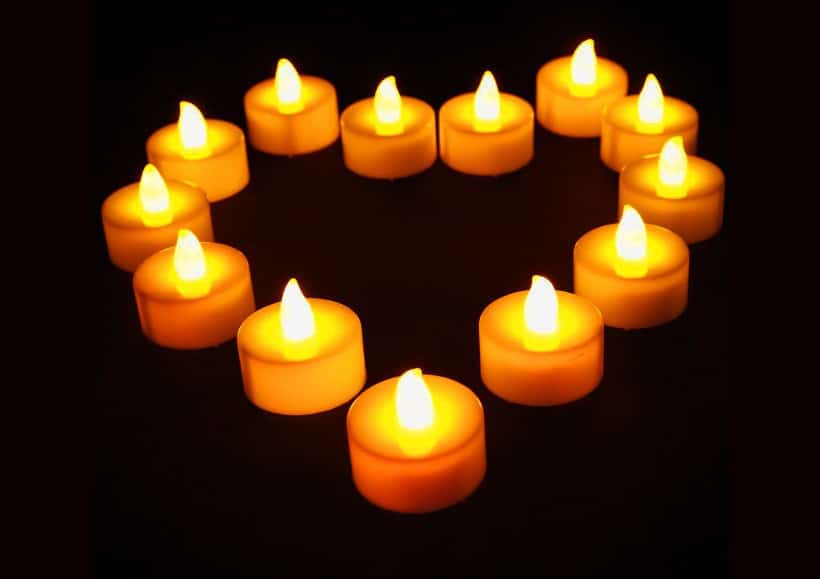
by Somya Devi | Oct 17, 2017 | Astrology, Conjunctions, Holy Days, Uncategorized
In this Kali Yuga, it almost always feels like we could use a little more light in the world, but especially around this time of year when the days are getting shorter and darker (northern hemisphere bias). The last few months seem to have piled on more natural disasters than usual, although sometimes it feels like this may be becoming the norm. This New Moon brings the Hindu festival of Diwali, which is a celebratory time to invite more light into our lives and into the world.
The darkest Moon time, which begins our next lunar cycle, occurs at 12:12 pm PDT this Thursday, October 19th. The new cycle begins with Sun and Moon joined in sidereal Libra, with Mercury and Jupiter there as well. Libra is a sign about creating more balance (which presents a bit of a challenge with the imbalanced appearance of the chart for this New Moon). It falls in the Vedic nakshatra of Chitra, a star-sign that enhances our opportunity to bring beauty and harmony in the world.
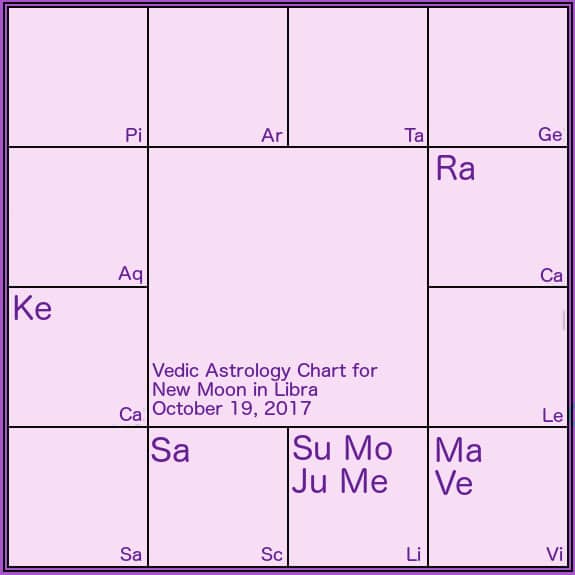
Libra
Libra is an air sign where we bring the principles of Venus into active expression. Venus is the planet of beauty, desire, nature, and human love, so the Libra cycle will encourage us to be more creative, connect with nature, and nurture our relationships. As an air sign (a bit intellectual, and inspiring movement), we will seek ways to balance or re-balance relationships throughout this cycle. Both Jupiter and Mercury are also positioned in Libra, close to the Sun and Moon at this time, which adds the influences of our higher beliefs as well as our analytical minds to our creative endeavors this month.
Debilitated Venus
Venus itself, the ruler of Libra, is currently transiting Virgo, his sign of debilitation. Debilitated Venus doesn’t necessarily translate as “relationships will be bad,” but it adds a highly intellectual, analytical, and practical motivation to the planet of pleasure and beauty. This is the opposite position to exalted Venus in Pisces, which we experienced for four months earlier this year (February through May), when we felt inspired to align our desires and relationships with our highest beliefs, principles, and purpose. Now, with Venus in Virgo, we are prompted to scrutinize all the little details of our relationships and pleasurable pursuits, and make sure that they are serving some practical need for us on the earth plane. We may also be scrutinizing our partners, or others around us, and getting caught up around the nuances of language or ideas. With Venus ruling this upcoming lunar cycle, and Mercury joining closely to the Sun and Moon at its start, desire for practicality will be strong this month.
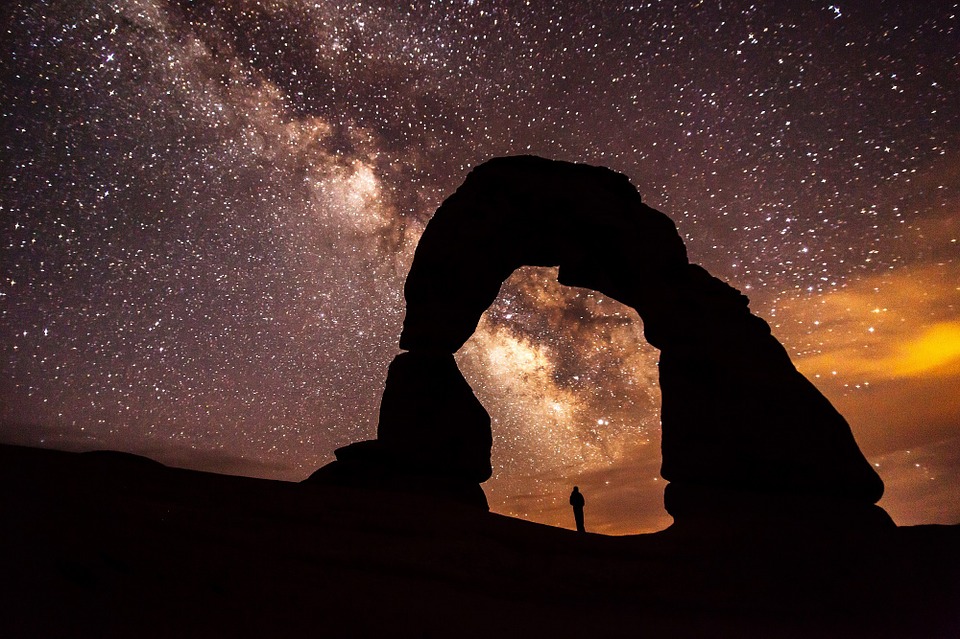 Chitra
Chitra
The Vedic nakshatra where this lunar cycle begins is Chitra, “the brilliant.” This bright star in Virgo (Chitra bridges Virgo and Libra) is ruled by Vishvakarma, the deity known as the celestial architect. Imagine that energy of one who has the ability to place all the stars in the sky and set them in perfect motion … that type of both precise and artistic energy is what we are able to call in this month. There is a powerful creative potency here, and a great potential for improving relationships. It is also an supportive energy for organizing, repairing, or redesigning your home space.
Diwali
On the new Moon of the Hindu month of Ashwin (this month), we celebrate Diwali, the festival of lights. The festival actually began on Monday, the 16th (North America), the 13th waning Moon phase of the previous cycle. This day is known as Dhanteras, or Dhanvantari Tryodashi. Buying gold or silver (or any metals) on Dhanteras is widely practiced in Hindu culture. It is also the celebration of the appearance of Lord Dhanvantari, the father of Ayurvedic medicine. This day, and Diwali in general, is an excellent time for nurturing and calling in blessings for any type of healing or healing practice.
Diwali is a time to invite more light into our lives, our hearts, and our world. This festival celebrates the victory of light over darkness, which is something to rejoice in and have faith in, even if we can’t outwardly observe it sometimes. The positive vibrations we create internally are the only place to start for growing and spreading them externally. It is a powerful time to connect to the Goddess Lakshmi, calling in her blessings for both material and spiritual prosperity.
This holiday also commemorates Lord Ram’s and Sita’s return from exile after fourteen years (story from the Ramayana). Lord Ram embodies the highest qualities of dharma, devotion, compassion, courage, and leadership. Diwali is also the start of a new lunar cycle, so it’s a great time to go within and summon these qualities to awaken and live through you.
Diwali (also seen as Divali, Deepawali or Deepavali) comes from the sanskrit words deepa (light) and avali (row). It is traditional to light candles throughout Diwali, inviting the highest light into our homes and hearts … but in consideration of the destructive wildfires raging in California right now, I’m using electronic tea lights this year.
The candles are lit to remind us of the inner divine light in us all. Though one flame can be used to light many others, it is not diminished by sharing its power of illumination. We can pray for the peace and happiness of all beings, and each one’s awareness of their inner light.
Sun in Libra
It is pertinent to remember and to celebrate and call forth our inner light during this particular Dark Moon time, because the Sun, the planet of our inner power, strength, and divine light, is also in his sign of “debilitation,” in Libra.
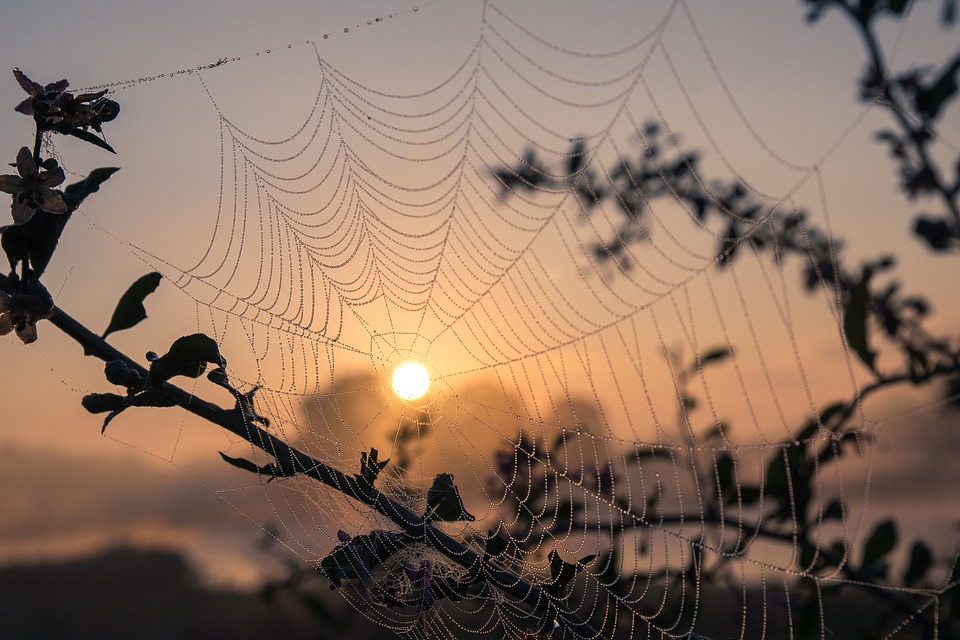
Since Libra is the sign of balance and relationships, we often give a lot of our personal power to our relationships with others when Sun is in Libra. We may try too hard to care for others, forgetting to nourish the divine spark in ourselves, or we may simply feel depleted by trying to balance too much in life, losing touch with our personal strength and vitality.
At the beginning of this cycle, set an intention for a mindful self-care routine this month. Light some candles (or turn them on) for Diwali on the Dark Moon night, and if possible, take some time each day to offer yourself some time to nourish and honor your personal light. Self-care practices can include yoga, meditation, chanting, art, or self-abhyangha (oil massage). You can also make some herbal tea to nourish yourself during this vata (cold and dry) season.
Kala Saarpa
The imbalance of the chart that I was talking about is referring to the ongoing Kala Saarpa yoga we see, wherein all seven physical planets are on one side of the nodal Rahu-Ketu axis. With these planets to one side of the nodes, the subconscious shadow energy (similar to eclipse energy) becomes more present, and a lot of unresolved business may arise. There is more agitation of the environment in general. This chart is particularly imbalanced, with the Sun, Moon, Jupiter and Mercury halfway between the nodes, and the other planets joining them on either side. As we enter this darker time of year, it is especially important to keep up our consciousness development and self-improvement practices, so as not to be ruled by the unconscious forces within.
Diwali is a potent opportunity to set this conscious intention, and to call forth more light and love into our hearts, and then to spread it out into the world! With so much trauma and disaster occurring all over the planet, our light, love, and service are needed now more than ever. No matter how small a part we can play, let us do what we can to increase harmony on and with the planet.
Ram Ram
You can click here to discover your specific strengths and challenges through a personal Vedic astrology chart reading with me.
Save
Save
Save
Save
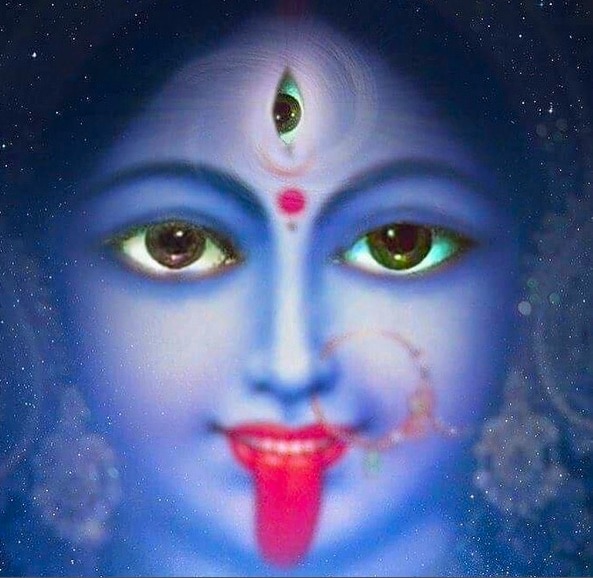
by Somya Devi | Sep 20, 2017 | Astrology, Events, Holy Days
Maha Navaratri 2017 begins today! In this important Hindu holiday, we celebrate the Goddess through “the great nine nights” (nav = nine, ratri = night). This festival will run through September 30th, the first ten days of this new lunar cycle. Goddess, Devi, Shakti, Durga, Divine Mother—the many names and forms all represent the dynamic and fluid feminine power that enlivens all of existence.
She is the creatrix, the warrioress, the nurturer, the purifyer, the protector. While she’s in the innocent and fertile maiden so is she the wise and learned crone. Both the nurturing mother, and the one who gives “tough love.” The impassioned lover, the devoted bhakta, the disciplined yogini. We see Goddess appear through us in innumerable manifestations. Through her many forms she teaches us and offers us countless blessings–love, compassion, courage, learning, discipline, surrender, success, enlightenment, and bliss. This festival is a time for celebrating the supreme feminine power in all her glory, and the many blessings she bestows upon us.
As with most Hindu celebrations, this festival correlates with the lunar calendar, and thus begins on the first day of the waxing Moon after the New Moon of September 19th. The celebration is through the “nine nights” of 21st through 29th, and into the eleventh morning known as Vijayadashami, “the day of victory,” on September 30th in some places (because of the way the lunar phases correlate with the solar days… Check the Vedic panchanga for your city to see the exact dates for Navaratri where you are.). Worship during Navaratri is most generally dedicated to Goddess in the form of Durga, the demon-slayer, but there is much nuance and variation to practice and forms of celebration throughout India. Above all, Navaratri is a community celebration of the Divine Mother, and the love, abundance and protection she gives.
There are many Navaratri celebrations throughout the year, but the fall-time Navaratri is the most widely celebrated, and is thus called Maha Navaratri – “the great nine nights”. It correlates with the time of the harvest, a time to give thanks for the abundance of the year’s work. Grains and crops are often offered to Devi as part of the celebrations. Ritualistic worship (puja) typically occurs in homes and temples throughout the nine nights and into the tenth morning of celebration.
The Many Forms of Goddess
Durga-Lakshmi-Sarasvati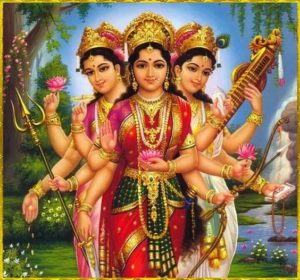
In Kerala and other places in India, the first three nights of worship are dedicated to Durga (the invincible), the next three to Lakshmi (Goddess of prosperity), and the final three to Sarasvati (Goddess of learning). Durga, also celebrated as her incarnation of Kali, helps us to destroy and remove the negative tendencies in our minds and hearts, freeing us from the obstructions to our spiritual and material pursuits. Lakshmi helps us to cultivate positive qualities like compassion and devotion, and leads us towards both spiritual and material prosperity. Sarasvati assists us in attaining knowledge and wisdom, through the illumination of our consciousness. She aids in awakening sattva, the quality of purity, and the flow of prana, the vital breath. After removing inner and outer obstacles and cultivating prosperity through virtuous qualities, our devotion, service, and practice help us to attain a state of peace, bliss, and oneness.
Sarasvati-Lakshmi-Kali/Durga
In the Kali Kula (Kali school of worship) in northeastern India, Sarasvati is worshiped on the first three nights, followed by Lakshmi on the next and then Kali/Durga on the last three. Sarasvati, Lakshmi, and Kali/Durga (Kali emerged from Durga) are also known as the consorts of Brahma, Vishnu, and Shiva. The Goddesses, therefore, provide the shakti to the cosmic processes of creation, preservation, and death (transformation), similar to their male counterparts. Consequently, worship in this manner is dedicated to the cycles of life and Mother nature, through birth, then sustenance, then death. Death is not a complete stop, but allows for the regeneration of energy into a new cycle once again.
9 Forms of Durga
Throughout India, the nine nights of Navaratri are often dedicated to 9 different incarnations of Durga, allowing the worship of many different aspects of Shakti in a gradual evolution. You can read the stories and significance of these 9 goddesses here (or click on Goddess name below), or a more a brief introduction, here:
“Daughter of the mountain”; creative energy, muladhara (root chakra), awakening; Awaken your connection with Goddess today or initiate a new venture, calling on Shailputri for new beginnings.
The ascetic; tapas, discipline, devotion, strength, wisdom, creative abundance; Good day for fasting and meditation, connection with svadhistana (sacral chakra).
Warrioress; protection, courage, grace, manipura (solar plexus); Destroy your internal obstacles by offering them to Chandraghanta.
4. Kushmanda (September 23rd)
Creatrix of the “cosmic egg”; strength, health, happiness, success, relationships; Connect with the vital Sun energy and the anahata (heart chakra) today.
“Mother of Skanda/Kartikeya”; motherly love, nourishment, protection, purity; Call on divine truth through the vishuddha (throat chakra), invoking Skandamata to lead you towards victory.
6. Katyayani (September 25th)
Warrioress who destroyed Mahishasura (the buffalo demon); victory, devotion, strength, removing obstacles; Meditate on these qualities of Goddess through the ajna chakra (third-eye) today.
7. Kalaratri (September 26th)
“Dark/black night,” representing a fierce form of Durga/Kali; darkness, death, surrender, dissolution of pain; Connecting with the sahasrara (crown chakra), remember that Divine Mother offers love, compassion, and many blessings even in hard times. Even in the midst of apparent darkness, and helps us to go beyond the boundaries of the material body-mind and connect with spirit.
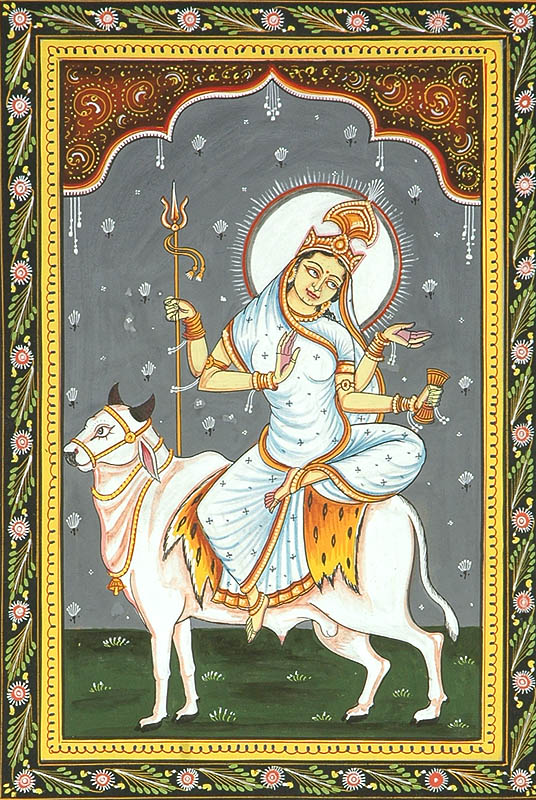 8. Mahagauri (September 27th-28th)
8. Mahagauri (September 27th-28th)
“Great white goddess”; detachment, purification, renewal, protection, virtue; Through detachment and devotion, we emerge purified, shining and radiant after surrendering in the dark night. Rejuvenative herbs and foods are good today.
Goddess of “siddhis”; magical, spiritual or mystic powers and blessings, fulfillment of desires, devotion, divine union; Invite Goddess to reveal her presence to you everywhere and in every moment.
Personal Practice Ideas for Navaratri
If possible, it is great to reduce our workload and gather with community at local temples or places of worship. We can also create a little time and space at home and conduct some personal practices to celebrate Goddess energy. Dive into your own heart to connect with the inner Goddess in the ways that resonate most with you! Here are some ideas to do at home or with a group throughout the nine nights of Navaratri:
Altar
Create a sacred space, a Durga altar, or a Goddess altar. Even if you already have one, you can refresh it in some way or rearrange it specifically for Navaratri. Include images or statues of the Goddess(es) you have a relationship with. This could be according to one of the groups of forms above.
Invocation
Even if you don’t have much time, dedicate at least a few minutes each day to connecting with the Divine Mother in front of your altar, calling her energy into your life and being.
Journal
Write in your journal about what qualities of Goddess you perceive and connect with. What aspects would you like to strengthen or to cultivate more deeply? Write any and all prayers and offer them to the form of Goddess that appeals to you.
Light
Offer light to illuminate Goddess’s power, helping her to shine more brightly into the world and your life. You can light a candle by the altar and keep it burning when you’re at home. You can even keep an electronic tealight on symbolically when you are away.
Flowers/Grains
Offer flowers or grains (even a small dish of dried rice) to celebrate Devi in the form of mother nature, fertility, the abundance of the harvest, and the cycle of life.
Offerings
Offer incense, bells, water, or food if you feel called, by placing it on the altar, or mentally offering it to Goddess throughout the day. You can also offer something symbolic of your own work or practice, whatever you have been cultivating for harvest through the year. In offering this you surrender the fruits of your efforts to the Divine Mother.
Fasting
Some people choose to fast in some variation, if this is something you have practiced before. This might include fasting during the day, fasting with only milk or fruit, or abstaining from alcohol and non-vegetarian foods during Navaratri.
Chanting
Chanting the Devi Mahatmyam, a verse to the Goddess, is a common practice during the nine-night festival. You can also chant another Goddess mantra or songs that are special to you and your relationship with Devi.
Jai Ma Durga!
Personal Vedic Astrology readings and forecasts are available Here.
Did you like Maha Navaratri 2017? Please Like, Comment and Share!
Save
Save
Save
Save
Save
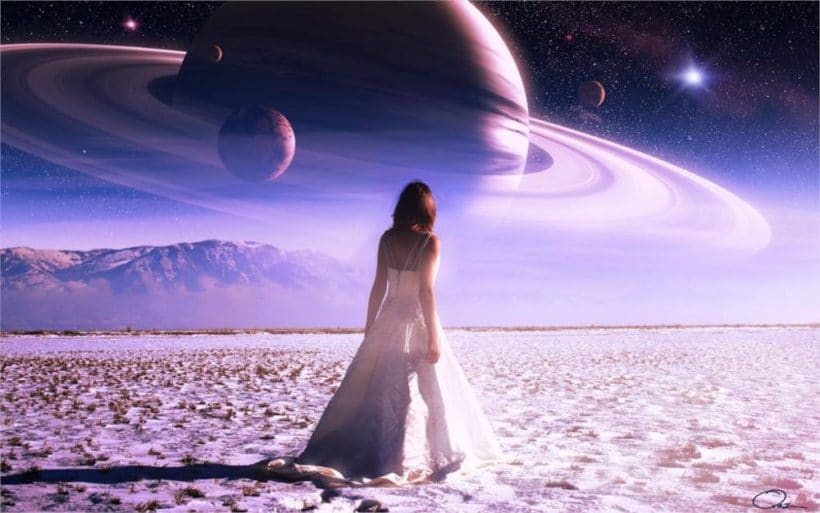
by Somya Devi | Sep 18, 2017 | Astrology, Conjunctions, Holy Days, Planets Changing Signs
New Moon in Virgo
The new lunar cycle begins Tuesday, September 19th, at 10:30 pm PDT, with Sun and Moon in sidereal Virgo. After a couple of months full of a lot of emotion and fire with many planets (and eclipses!) in Cancer and Leo, we have a chance to ground out a little bit more under the influence of earth-sign Virgo. Virgo is ruled by Mercury, the planet of the intellect, which brings a more practical and impartial nature to our energies this month. There is opportunity for curiosity and learning. The cycle begins in the Vedic nakshatra called Uttara Phalguni, which reminds us to take time in relaxation in order to re-kindle our productive energy.
The placement of Mercury and the nodes at the time of the Dark Moon, however, continue to make for a strong amount of “shadow” and subconscious energy to be present. Mercury, the lord of Virgo, will be in the 12th house from the Sun and Moon, and joining closely with Mars, showing a lot of intensity in the subconscious and potential for feeling disconnected. This New Moon also occurs under a full kala sarpa yoga, an alignment in which all seven planets are in between the two nodes of the Moon, Rahu and Ketu, in the cosmic circle.
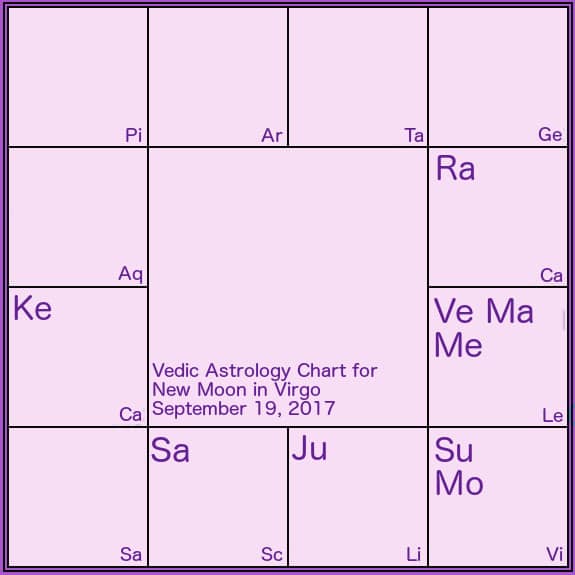
Kala Sarpa
The kala sarpa yoga can be translated as “black snake” or “serpent of time.” The Moon transits the entire zodiac each month, so for two weeks of each month Moon will be on the other side of this axis, breaking the kala sarpa yoga, but for half of the month all planets will fall on one side of the “black serpent.” This will occur frequently over the next several months, when all seven planets will be situated to one side of the nodal axis (see photo) for half the month. The Moon transits the entire zodiac each month, so for two weeks of each month Moon will be on the other side of this axis, breaking the kala sarpa yoga, but for half of the month all planets will fall on one side of the “black serpent.”
When this alignment occurs, more of the shadowy and subconscious energy represented by the nodes is present. We may expect to be more introverted during this time, but it is also possible that more disruptive events can occur. People who are born under this alignment tend to have many “heavy” experiences throughout life. There can still be many positive and auspicious events during this time as well (or for those born under a kala sarpa yoga), but they tend to come after or despite some hardships or challenges.
Look for this yoga to occur for half the month from now through January of 2018. We experienced a similar occurrence last year (2016) from roughly September through January. This doesn’t happen every year, but we happen to be in a time where both Jupiter and Saturn, the slower-moving planets, are both to one side of the nodal axis. Thus this alignment occurs when the faster-moving planets, Sun, Mars, Mercury, and Venus, (plus Moon for half of each month) are also on one side of the axis.
Navaratri
Thankfully, there is a wonderful opportunity at hand to get in touch with the shadowy, subconscious energy of the nodes, through ritual worship and practice offered by Navaratri, the “nine-night” festival of the Goddess, which begins on the first day of this lunar cycle. This is a Hindu festival dedicated to worshiping the Goddess, Devi, in her many forms, for nine days and nights. As the night represents darkness and ignorance, we pray to her to help reveal and remove our shortcomings, bestow blessings, and confer wealth and knowledge. We face the darkness and call on the Divine Mother to remove it and let the atman, or the pure divinity within each of us, shine forth.
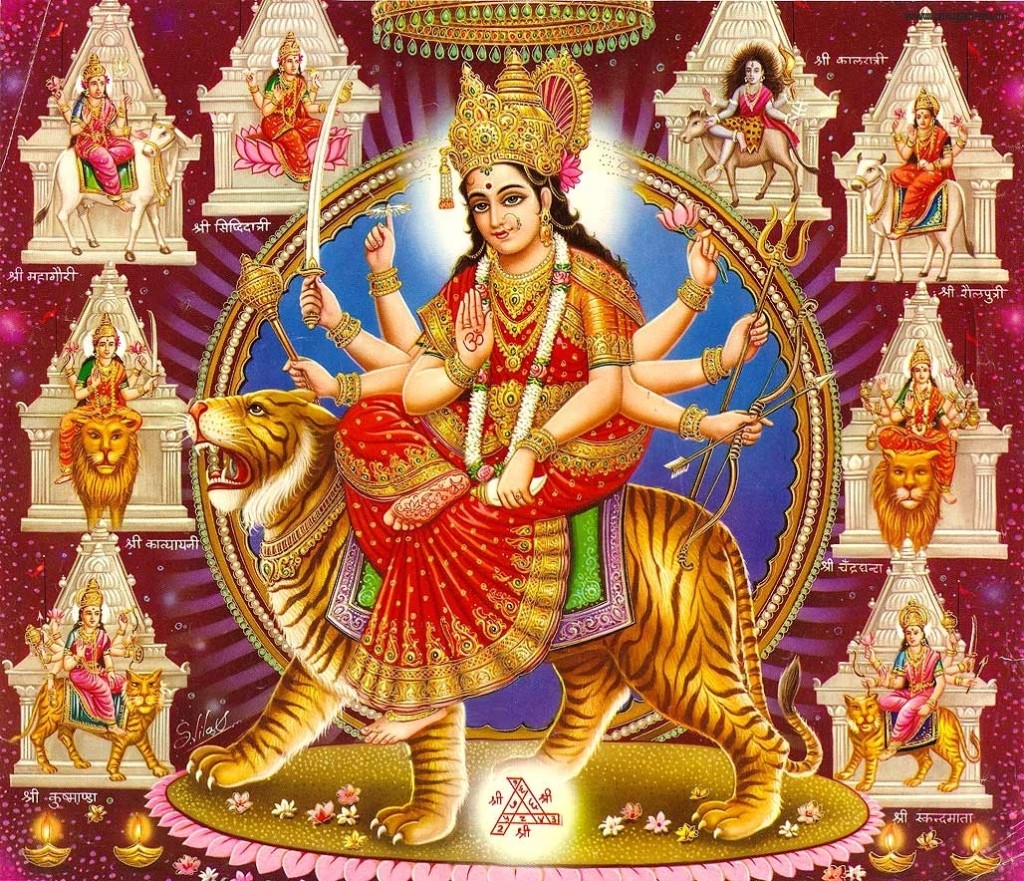 Navaratri worship can include creating a special altar to the Goddess, and making daily offerings including flowers, food, incense, light (a flame), ghee, as well as prayer, meditation, mantras and bhajans (devotional songs). The Devi Mahatmya (a.k.a. Chandi Path), the story of Durga, is a traditional text to read throughout this festival. Occurring in the fall-time in India and the northern hemisphere, this Navaratri also coincides with the harvest season, and is a time to give thanks for the abundance of the harvest and pray that it carries us through the winter season.
Navaratri worship can include creating a special altar to the Goddess, and making daily offerings including flowers, food, incense, light (a flame), ghee, as well as prayer, meditation, mantras and bhajans (devotional songs). The Devi Mahatmya (a.k.a. Chandi Path), the story of Durga, is a traditional text to read throughout this festival. Occurring in the fall-time in India and the northern hemisphere, this Navaratri also coincides with the harvest season, and is a time to give thanks for the abundance of the harvest and pray that it carries us through the winter season.
In many places, the first three nights of Navaratri are dedicated to Goddess in the form of Durga or Kali, warrior goddesses who help us to cleanse our impurities, the next three to Lakshmi, goddess of prosperity and devotion, and the last three to Sarasvati, goddess of wisdom. In other traditions, there are nine different forms of the Goddess honored on each of the nine days and nights. Be sure to follow me to receive daily updates throughout the festival!
Nodes Have Changed Signs
Since the onset of the eclipse cycle in early September, the nodes, Rahu and Ketu, have fully transitioned from the Leo-Aquarius axis to the Cancer-Capricorn axis. This completes one year-and-a-half transit as it begins another. From now through March of 2019, we will experience Rahu in Cancer and Ketu in Capricorn. The obsessive, insatiable Rahu in Cancer will cause us to experience a heightened state of emotionality throughout this time, with perhaps overwhelming sensitivity at times. The confusion of the nodes impels us to take time to get a better understanding of our hearts, and much will be revealed around the eclipse cycles that come in January-February 2018, July-August 2018, and January-February 2019.
With Ketu now transiting sidereal Capricorn, we will have to observe our shadows in the way that we balance our emotional nature with our practicality. Ketu in Capricorn could make us resistant to taking responsibility and practical steps for the future, but he will eventually raise self-awareness around any challenges we have here. We can be very self-critical in the area of Ketu’s transit, which will also affect each individual where Capricorn falls in the natal chart. Conversely, we may encounter impatience, restlessness, and even lust in the area of life indicated by Cancer in our natal chart, while Rahu transits there. I am happy to offer this Full Report and Forecast for Your Sign Here. (If you’re already on the free mailing list, you’ll be getting it in your inbox later today!)
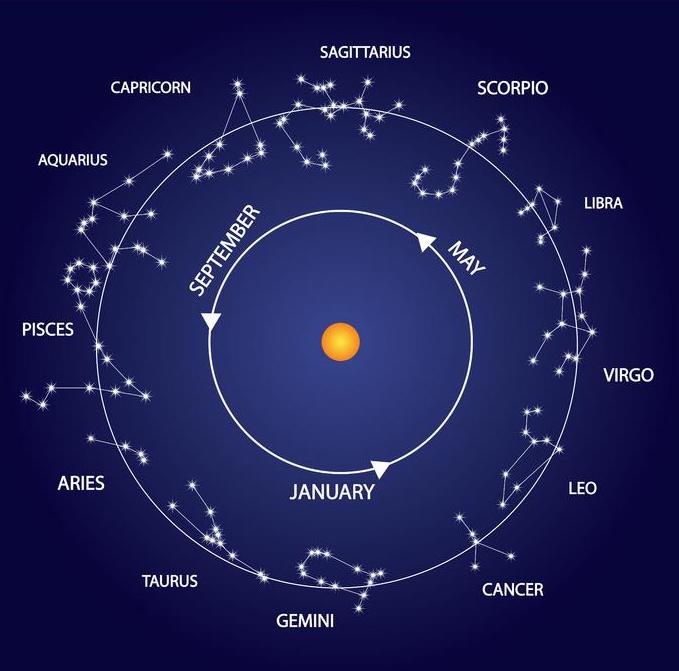
Jupiter in Virgo/Libra
Jupiter has technically transitioned zodiac signs recently, moving from sidereal Virgo’s into sidereal Libra’s designated slice of the pie-in-the-sky. Virgo is a much larger constellation than Libra, however, and in areas where abundant stars are visible just after sunset, one can see that Jupiter is still traversing the constellation of Virgo. The two do not each take up 30° of the 360° ring of the zodiac, in real observational terms, but rather Virgo takes up more than that portion while Libra covers less. Thus, we may be beginning to feel some energy of Jupiter in Libra (more inspiration for harmony, compromise, and the arts), I believe we are still experiencing a strong quality of Jupiter in Virgo (elevating our desire for organization of life’s details).
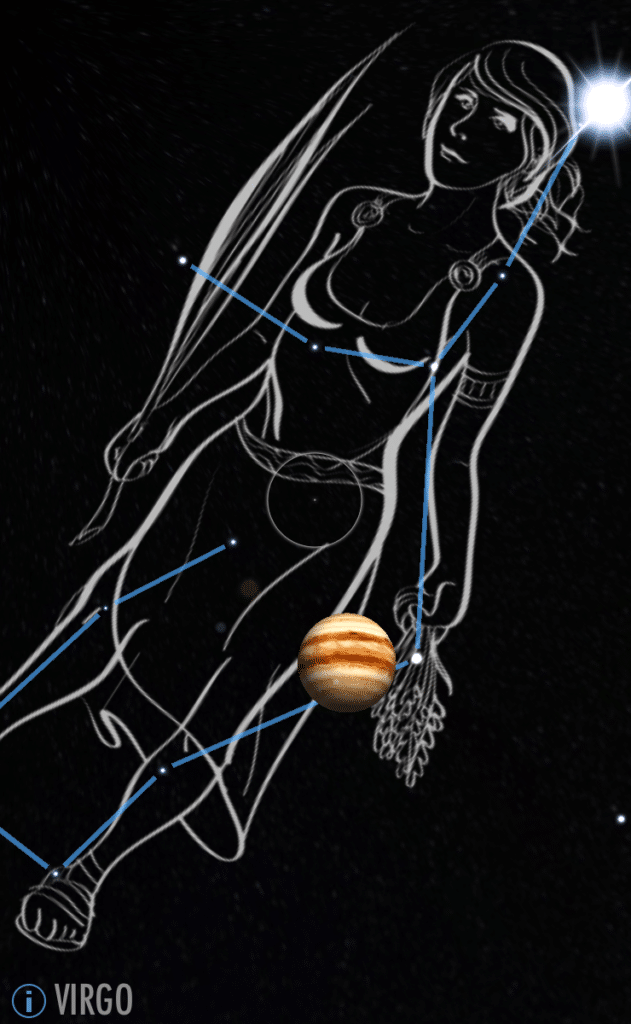 Also remember, most Western astrologers will say that Jupiter has been in Libra for the last year already, which can cause some confusion. That is based on the tropical zodiac, based on the seasons. Now is a great example of how the tropical zodiac does not correlate with the observable position of the planets and constellations as we see them from earth.
Also remember, most Western astrologers will say that Jupiter has been in Libra for the last year already, which can cause some confusion. That is based on the tropical zodiac, based on the seasons. Now is a great example of how the tropical zodiac does not correlate with the observable position of the planets and constellations as we see them from earth.
In the Vedic zodiac, Jupiter is still considered to be in the constellation of Chitra, which bridges the designations of Virgo and Libra. This nakshatra correlates with the star called Spica within Virgo (which Jupiter is closely conjunct at the moment), and translates as “the brilliant,” as it is one of the brightest stars in the sky. It is the sign of the celestial architect, and does bring forth a strong artistic quality. This is, therefore, a good time to allow your artistic inspiration to shine through, especially through both skillful and intelligent endeavors.
Mercury, Mars and Venus in Leo
Mercury, Mars, and Venus are all transiting sidereal Leo now. Venus in Leo can cause us to bring forth a lot of “me-first” in relationships, while the proximity of Mars and Mercury in this fire sign can lead to arguing, so be especially aware of these tendencies this month. The three are all catching an aspect from Saturn, now moving forward in direct motion in Scorpio, so that could help to add some mature caution to our impulses.
Save
Save
Save
Save
Save
Save
Save




 This Sunday, December 17th, we begin a new lunar cycle at 10:31 pm PST with the Sun, Moon, and Saturn aligning in early sidereal Sagittarius. This Sagittarius cycle will lead us into the new year, with the Moon reaching fullness on January 1st. The Sun and the Moon will come together at 2° of sidereal Sagittarius, aligned closely with Saturn at 5° and oriented towards the galactic center, and Mula nakshatra.
This Sunday, December 17th, we begin a new lunar cycle at 10:31 pm PST with the Sun, Moon, and Saturn aligning in early sidereal Sagittarius. This Sagittarius cycle will lead us into the new year, with the Moon reaching fullness on January 1st. The Sun and the Moon will come together at 2° of sidereal Sagittarius, aligned closely with Saturn at 5° and oriented towards the galactic center, and Mula nakshatra. Mula Nakshatra
Mula Nakshatra


 Chitra
Chitra


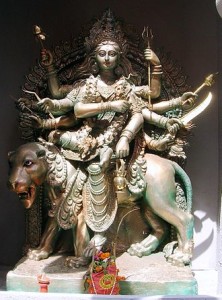



 Navaratri worship can include creating a special altar to the Goddess, and making daily offerings including flowers, food, incense, light (a flame), ghee, as well as prayer, meditation, mantras and bhajans (devotional songs). The Devi Mahatmya (a.k.a. Chandi Path), the story of Durga, is a traditional text to read throughout this festival. Occurring in the fall-time in India and the northern hemisphere, this Navaratri also coincides with the harvest season, and is a time to give thanks for the abundance of the harvest and pray that it carries us through the winter season.
Navaratri worship can include creating a special altar to the Goddess, and making daily offerings including flowers, food, incense, light (a flame), ghee, as well as prayer, meditation, mantras and bhajans (devotional songs). The Devi Mahatmya (a.k.a. Chandi Path), the story of Durga, is a traditional text to read throughout this festival. Occurring in the fall-time in India and the northern hemisphere, this Navaratri also coincides with the harvest season, and is a time to give thanks for the abundance of the harvest and pray that it carries us through the winter season.
 Also remember, most Western astrologers will say that Jupiter has been in Libra for the last year already, which can cause some confusion. That is based on the tropical zodiac, based on the seasons. Now is a great example of how the tropical zodiac does not correlate with the observable position of the planets and constellations as we see them from earth.
Also remember, most Western astrologers will say that Jupiter has been in Libra for the last year already, which can cause some confusion. That is based on the tropical zodiac, based on the seasons. Now is a great example of how the tropical zodiac does not correlate with the observable position of the planets and constellations as we see them from earth.